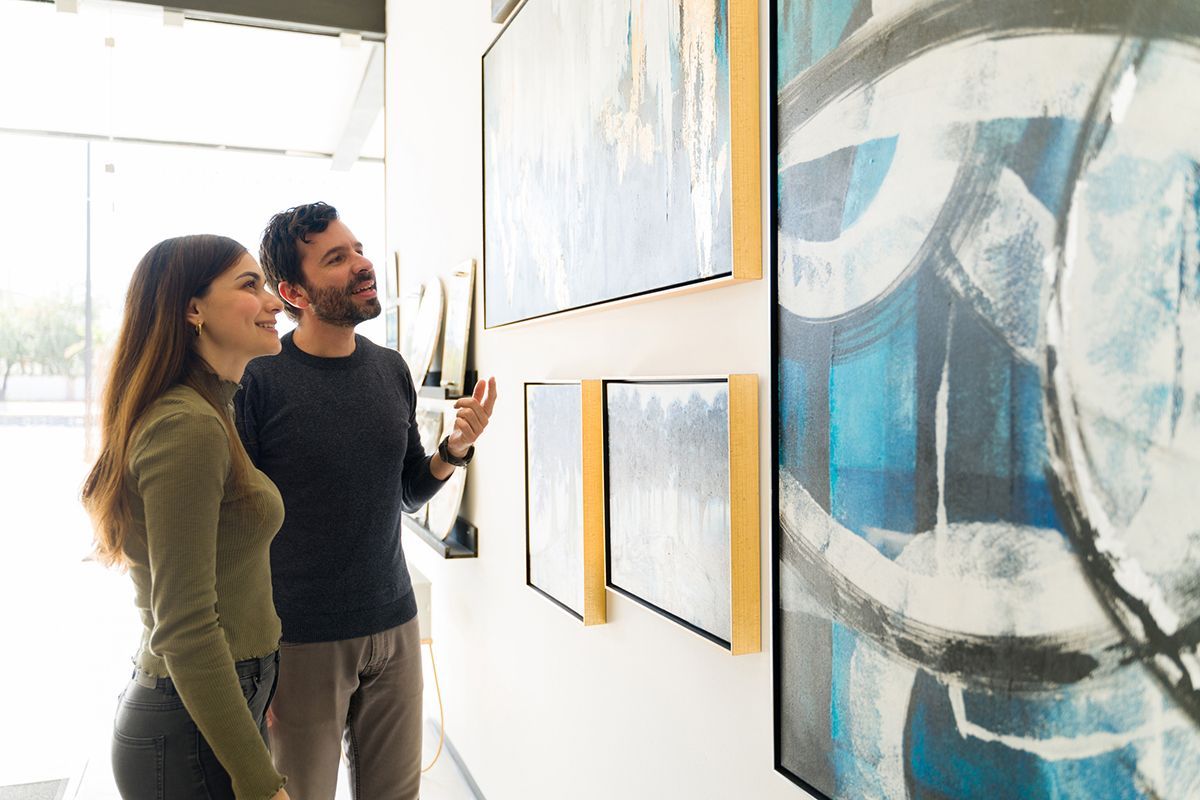Mastering Fine Art Collecting
Discover expert tips and strategies for mastering the art of fine art collecting

Discovering Your Art Style
So you want to do more than hang a few charming pictures on your wall? While that is a certainly a great beginner approach, you may be at a point in your life when you want the items on your walls to have more meaning and reflect your own personal style. Anyone can become a fine art collector. It just takes a little self-guided education, a small time commitment and--here's the fun part--getting to know the art enthusiast in you. First, it's important to delve into history, if only just a bit. By familiarizing yourself with various art movements, the objectives behind them and the masters that ushered them in, you will learn a lot with little effort. You may even surprise yourself by discovering an appreciation for styles and forms of artistic expression you may not have fully understood before. Teach yourself to look at art wherever you go. Ask yourself what resonates with you. Go to museums and local art galleries. Spend a day at an arts and crafts fair. Don't be shy. Most artists are happy to talk about their work. By speaking with different artists about their styles, mediums, methods of application, and their inspirations, you will continue to build on your fast growing knowledge of fine art. You may even want to experiment with some art creation on your own or even sign up for a workshop. This immersive experience of art will not only provide valuable insight, it will prepare you for beginning your own fine art collection. Now you are on your way to developing a sophisticated and satisfying collection of art.
Building Your Art Collection
Now that you've established a knowledge base about fine art, and at least the beginnings of a sense of your own personal style, we are ready to think about your first investment. Start by defining your collecting goals as well as a realistic time line and budget. Determine the subjects, mediums, and color palettes that you are most interested in. You may wish to avoid particularly trendy color-ways and techniques, as these tend to become tired as the trends change. Instead, focus on artists who have built a body of work based on skill, compositional style and dedication to their craft. This will help you begin to build a meaningful collection of art.
Next, set a budget for your art acquisitions. Fine art can vary greatly in price, so it's important to establish a realistic budget that aligns with your financial resources. Consider allocating a certain percentage of your income or savings specifically for art purchases. Collecting art is more often a delayed gratification than a one-day shopping spree. If you plan carefully you will slowly begin to build a collection, and you will enjoy the anticipation.
When acquiring art that will withstand the passage of time, you will learn to be savvy. First, be sure to evaluate the source from which you are purchasing the art. The fewer degrees of separation between the artist and the art dealer, the better. Be wary of dealers who are unable to give you sufficient background on the artist. Especially when collecting contemporary fine art, you should strive to make an in-person meeting with the artist, or at the very least, have the ability to reach out on-line to introduce yourself and ask any questions you may have. This not only will make your investment more meaningful, it should give you the reassurance that the art you're collecting is a genuine, original creation. Learn about the artist's background, artistic process, and reputation. Look for artworks that resonate with you emotionally and intellectually. Consider the quality and condition of the artwork, as well as its potential for appreciation in value over time.
Building relationships with galleries, dealers, and artists can also be very beneficial when building your art collection. A reputable dealer of fine art should take the time to get to know you, your style and your preferences. They should be a valuable partner in helping you attain your art collecting goals. Attend gallery openings, artist talks, and art events to further your connections with the fine art community, and with like-minded people. By developing these relationships, you may gain access to exclusive artworks and opportunities to expand your collection.
Remember to document your art collection. Keep detailed records and receipts of each artwork's provenance, purchase price, and any relevant certificates of authenticity. If your dealer did not provide you with a COA (certificate of authenticity) feel free to request one. Most artists will be happy to help you document their work. After all you are providing appreciated validation of their calling. Any documentation of your art will not only enhance the value of your collection but also provide important information for future generations.
Building a fine art collection is a lifelong journey, so take your time and enjoy the process. Be open to discovering new artists and artworks, and don't be afraid to take risks. Each piece in your collection should reflect your personal taste and your passion for art.
BUSINESS HOURS
- Mon - Fri
- -
- Saturday
- Appointment Only
- Sunday
- Closed






